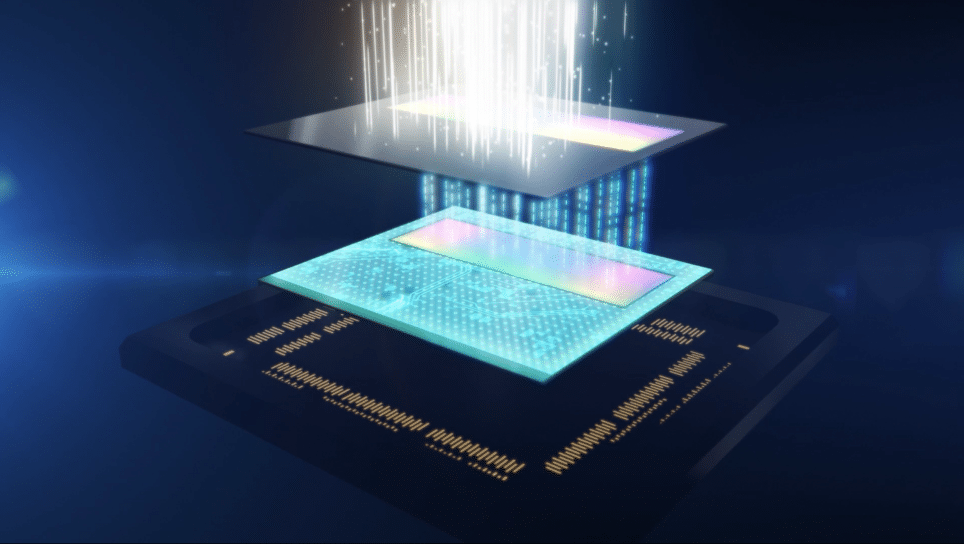Sony Semiconductor Solutions Corporation announced the launch of IMX459, a SPAD stacked depth sensor for automotive LiDAR applications that leverages the direct time-of-flight method (or dToF, direct Time of Flight): an absolute novelty in the sector.
The microscopic “avalanche” pixels of the 10 μm square single photon photodetector diode (SPAD) and the distance measurement processing circuit are enclosed in a single compact size chip (only 1 / 2.9 ″), designed to ensure maximum precision and speed.
IMX459, SPAD stacked depth sensor: what is it for?
The new sensor will help in future to improve the safety of mobility by optimizing the detection and recognition performance of automotive LiDARs, an indispensable element in the increasingly popular Advanced Driver Assistance (ADAS) and Autonomous Driving (AD) systems.
As well as on-board video cameras and millimeter wave radars, LiDARs are becoming increasingly important to detect and recognize road conditions or the position and shape of objects such as vehicles and pedestrians with extreme precision. The development and diffusion of this technology on the market, however, are slowed down by some technical obstacles, such as the need to further improve distance measurement, offer a greater level of safety and reliability, regardless of the environment and conditions of use. use, and switch to a solid-state design to reduce both the footprint and the cost. To meet these challenges, numerous solutions are already being studied.
Among the various methods used for measuring distances, that of dToF sensors uses SPAD pixels as detectors, calculating the distance to objects based on the flight time, i.e. the time it takes for the light emitted to reach the target and return to the source. . P.moving from the technologies developed for CMOS image sensors (in particular the backlit pixel structure, the stacked configurations and the Cu-Cu connections), Sony has succeeded in devising a device with a unique anatomy, which combines the pixels SPAD is the electronic circuit for distance measurement in a single chip. Thanks to this design, the pixel size does not exceed 10 square μm, resulting in a compact 1 / 2.9 ″ device capable of achieving a resolution of approximately 100,000 effective pixels. Not only that: both photon detection and reactivity have been enhanced to ensure high-speed distance measurement and other accuracy at resolutions with a range of 15 centimeters, from long to short distances. The product is fully compliant with the functional safety standards of automotive applications, benefiting the reliability of LiDAR, while the mono-chip structure helps to reduce the size and costs of the system.
the Main features
High-speed, high-precision distance calculation thanks to the stacked configuration that brings together the 10 μm square SPAD pixels and the measurement processing circuit.
The stacked configuration of the new sensor relies on Cu-Cu connections to conduct charging from each single backlit SPAD pixel (above) to the logic chip equipped with a distance measurement processing circuit (below). This overlap allows you to maintain a high aperture ratio, while keeping the pixel size to just 10 μm square. Furthermore, the product uses an irregular surface to refract the incident light, improving the absorption index.
All these features bring the photon detection efficiency rate to 24% at 905 nm, which is the wavelength normally used by automotive LiDAR laser sources. In this way it is possible, for example, to detect very distant objects with a low reflection coefficient and maintaining high resolution and distance resolution. The circuit section also includes a active charging circuit equipped with a Cu-Cu connection for each pixel, which limits the response speed to about 6 nanoseconds per photon under standard operating conditions.
This unique stacked structure allows measurements to be performed extremely quickly and accurately at a resolution of 15 cm, from long to short distances, helping to significantly optimize the detection and recognition performance of in-vehicle LiDARs.
LiDAR: Compliance of safety standards for automotive apps
The new sensor will be subjected to the tests required by the AEC-Q100 Grade 2 standard for automotive electronic components, which will certify its absolute reliability. Sony has also introduced a development process which, in addition to complying with the requirements of ISO 26262 for functional safety in the automotive industry, achieves a functional safety level ASIL-B (D) for functions such as fault detection, signaling and control. . A guarantee of reliability for future LiDARs.
Sony has designed a project of a Reference mechanical scanning LiDAR which integrates the new sensor and which will be made available to customers and partnersr. This offers the dual benefit of saving labor hours in the system development process and reducing costs by optimizing device selection.
















Leave a Reply
View Comments